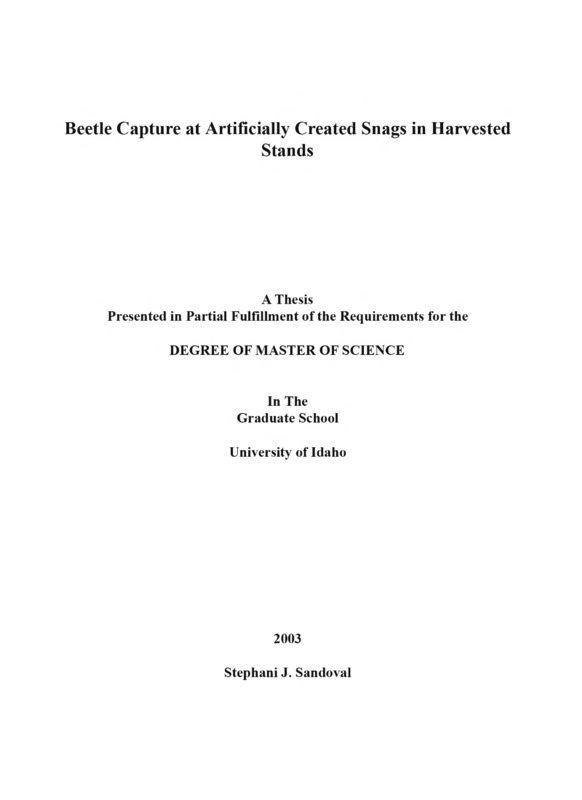PDF PREVIEW
Beetle Capture at Artificially Created Snags in Harvested Stands Item Info
- Title:
- Beetle Capture at Artificially Created Snags in Harvested Stands
- Creator:
- Sandoval, Stephani J.
- Date Created:
- 2003
- Description:
- In north-central Idaho, a stand was harvested leaving artificially created snags that were cut by a single grip cut-to-length harvester 4-7m above ground. Beetle populations were monitored on two species of snags, Pseudotsuga menziesii var glauca ((Beissn.) Franco) and Abies grandis ((Dougl. Ex. D.Don) Lindl.), using 12-unit Lindgren funnel traps. There was a significant difference (p<.05) between the two host species in the overall abundance (more beetles were captured near Douglas-fir snags), but family diversity and richness remained relatively constant throughout the trapping dates. Five families were selected for closer examination (Scolytidae, Curculionidae, Buprestidae, Cerambycidae, and Cleridae). Identified abundance of the selected families was not significantly different between snag species except for the Scolytidae, which were captured in significantly higher number near the Douglas-fir snags. The scolytid population was largely comprised of a single species, Hylastes nigrinus Mannerheim. Thus, while abundance is greater on Douglas-fir versus grand fir for the scolytids, the other families were similarly distributed between the two tree species.
- Document Type:
- Thesis
- Library Call Number:
- QL 576.S26 2003
- Subjects:
- snags habitat species diversity bark beetles cavity nesting birds artificial snags insect use patterns silviculture
- UIEF Unit:
- UIEF
- Location:
- UIEF
- Latitude:
- 46.869607
- Longitude:
- -116.733856
- Department:
- Department of Forest Resources
- Type:
- Text
- Format:
- application/pdf
Source
- Preferred Citation:
- "Beetle Capture at Artificially Created Snags in Harvested Stands", UIEF Research Exchange, University of Idaho Library Digital Collections, https://www.lib.uidaho.edu/digital/uief/items/uief_0064.html
Rights
- Rights:
- In copyright, educational use permitted.
- Standardized Rights:
- http://rightsstatements.org/vocab/InC-EDU/1.0/

